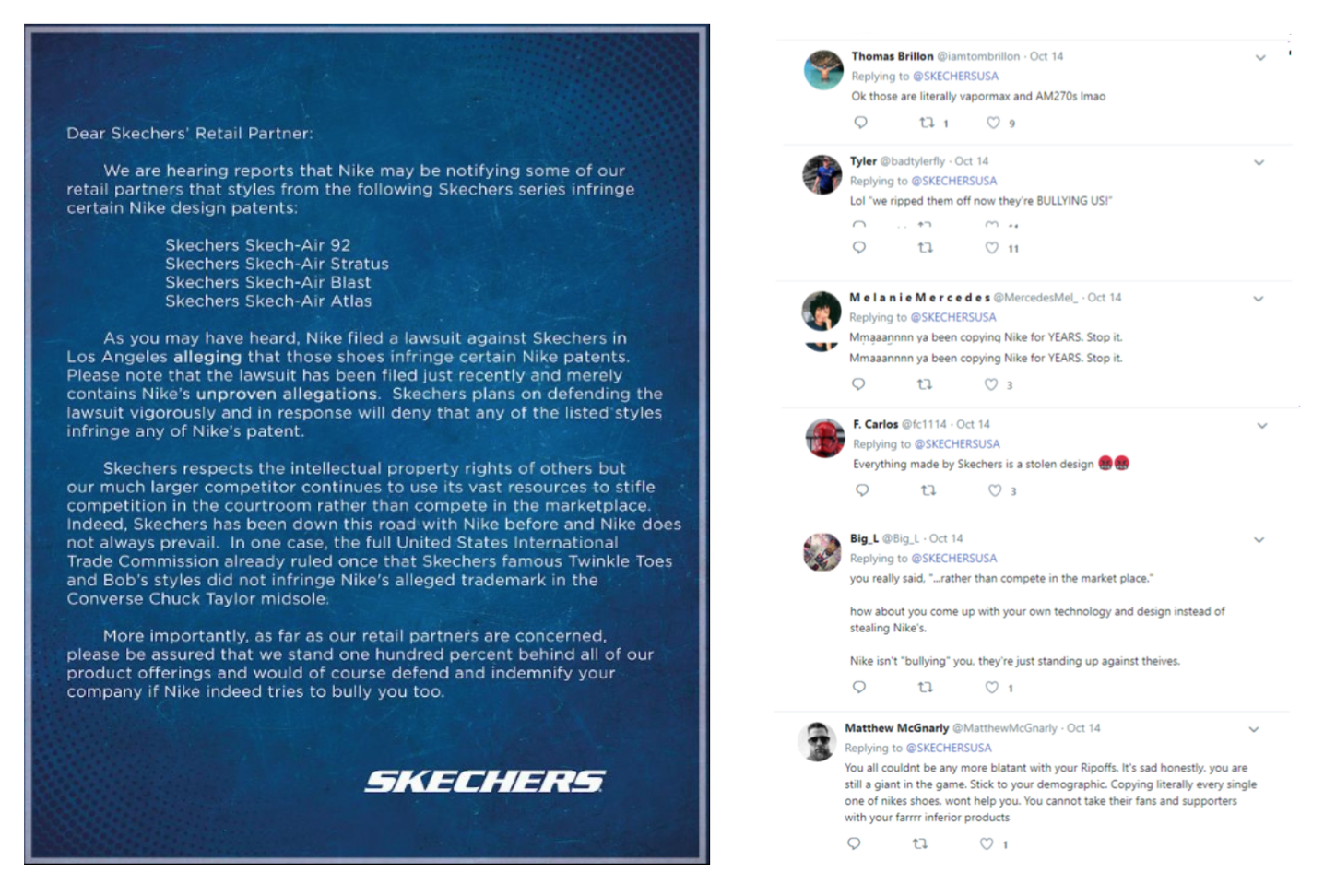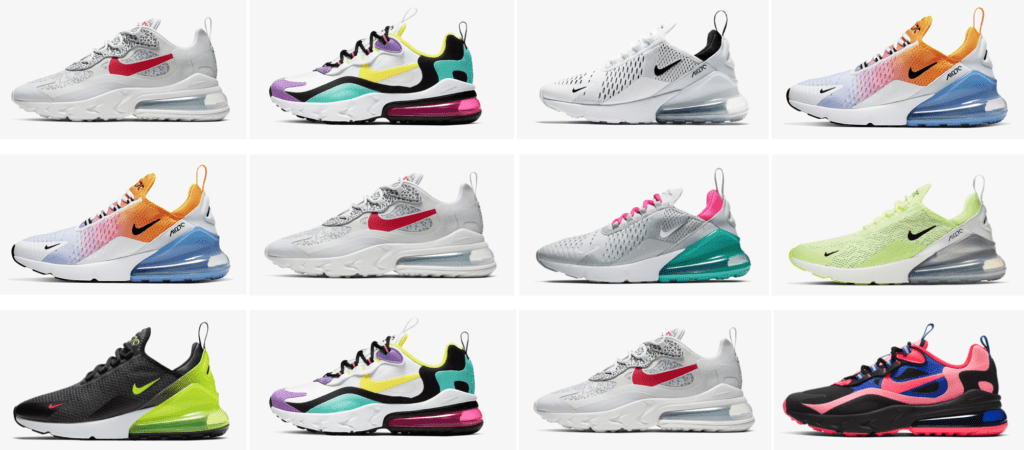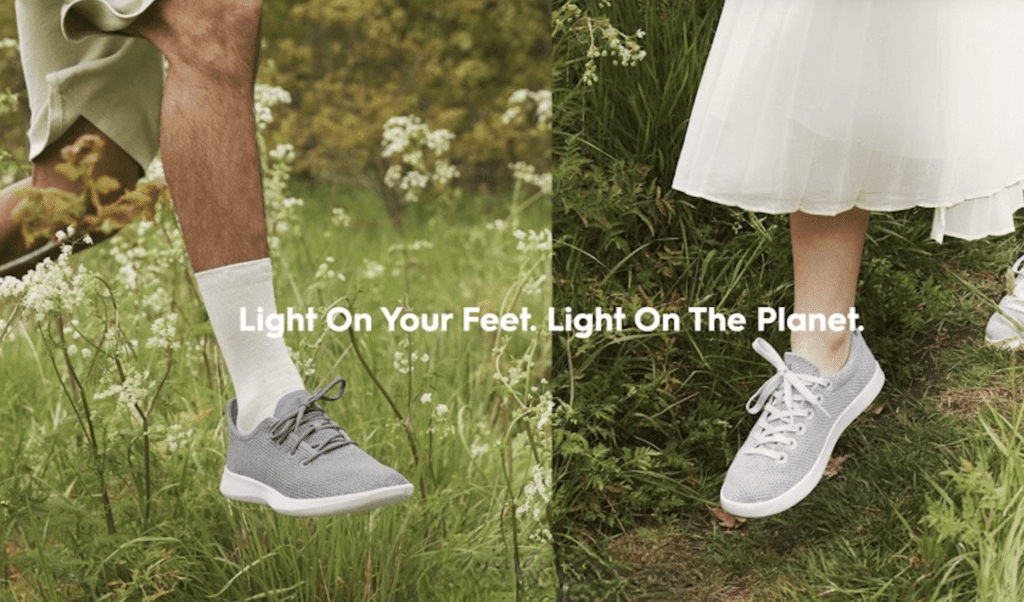Nike is escalating its existing fight against Skechers with a brand new lawsuit. On the heels of the Portland-based sportswear giant filing a design patent infringement suit against Skechers late last month in which it accused its fellow footwear brand of “copying its competitors’ designs” – including the design patent-protected elements of its VaporMax and Air Max 270 sneakers – in order to “to gain market share … instead of innovating its own designs and technologies,” Skechers opted not to immediately respond in court but to “publish [a] ‘letter’ in which it accused Nike of stifling competition and bullying,” thereby, prompting Nike to file a new lawsuit, this time lodging utility patent infringement claims against its rival.
According to the complaint that it filed in the U.S. District Court for the Central District of California on Monday, Nike claims that Skechers is running afoul of the law by way of its Skech-Air Jumpin’ Dots and Skech-Air Mega shoes, both of which allegedly infringe claims contained in two of Nike’s utility patents – one that protects “an article of footwear” with an emphasis on the cushioning cavity that exists in the midsole of the shoe (Patent No. 10,098,412), and another that covers the “sole component [of a sneaker] and a method of manufacturing the sole component” (Patent No. 7,401,420).
“Without Nike’s authorization, Skechers has made, used, offered for sale, sold, and/or imported into the U.S.” shoes that infringe a number of claims protected by the 412 and 420 patents, according to the Swoosh, as they include the same “sole structure incorporating a fluid-filled bladder and a reinforcing structure secured to the bladder,” “a cavity disposed between the upper and the outsole,” and a “plurality of protrusions [that] progressively decrease in height from the first protrusion to the forward-most edge of the article of footwear,” among other things.
In addition to asserting two claims of patent infringement, Nike sets the stage by informing the court that “this is not the first time Skechers has infringed [its] intellectual property rights,” and in fact, “this is the fourth lawsuit in a series of lawsuits that Nike, and its subsidiary Converse Inc., have filed against Skechers asserting a range of intellectual property rights,” including the still-ongoing proceedings that Nike-owned Converse initiated before the U.S. International Trade Commission (“ITC”), the lawsuit that Nike filed over Skechers’ copycat knitted sneakers, and the design patent infringement case that Nike filed against Skechers just last month.

Specifically addressing the letter that Skechers recently shared on its Twitter account, Nike claims that nowhere in the letter does Skechers deny that “its business strategy includes copying competitor designs and technologies to gain market share.” The company also does not deny, Nike states, that “it often copies NIKE’s innovative designs and technologies.” Instead, Skechers’ response “appears to be that its unlawful business practices are acceptable because it sometimes gets away with it, arguing that NIKE ‘does not always prevail’ when challenging Skechers’ copying,” which Nike says it not entirely true.
(Nike clarifies, stating that while the ITC determined that Skechers’ Twinkle Toes and Bobs styles do not infringe Converse’s trademark in the Chuck Taylor midsole design, that “is only part of the story of that dispute.” The ITC also stated in the same decision that “other Skechers’ shoes have midsole designs that are identical or nearly identical to Converse’s Chuck Taylor midsole design,” and in any event, Nike notes, “that investigation is still pending at the ITC.”)
More than that, Nike defends its intellectual property enforcement efforts, asserting in its complaint that its “enforcement of its intellectual property rights against infringers, including copyists like Skechers, is not bullying and it does not stifle competition.” In reality, Nike argues, “Intellectual property rights are fundamental rights, [and] if companies cannot defend their innovation—and companies like Skechers are permitted to build multi-billion dollar businesses on the backs of creators and innovators by copying designs and technologies year-after year—it stifles innovation and competition for businesses both big and small.”
“The marketplace appears to understand this,” Nike states, pointing to consumer responses to Skechers’ letter on social media, which “called-out Skechers for copying.”
As for Skechers, counsel for the Swoosh argues that the company “thumbs it nose at fair competition,” and notes that “Skechers’ CEO, Robert Greenberg, gives orders to knock-off competitor products … and Skechers’ employees are ordered to make ‘exact copies’ of competitor shoes,” while the company, itself, engages in a practice of allegedly “using code words in its internal copying documents to attempt to shield the documents from discovery in litigation.”
With that in mind and in addition to monetary damages, Nike is seeking a judgment and order that Skechers has infringed its 420 and 412 patents, and permanent injunctive relief to prohibit it from continuing to do so.
The case is Nike, Inc. v. Skechers U.S.A., Inc., 2:19-cv-09230 (C.D. Cal.).











